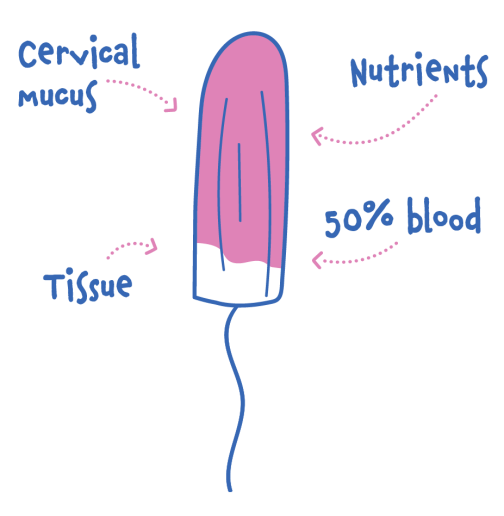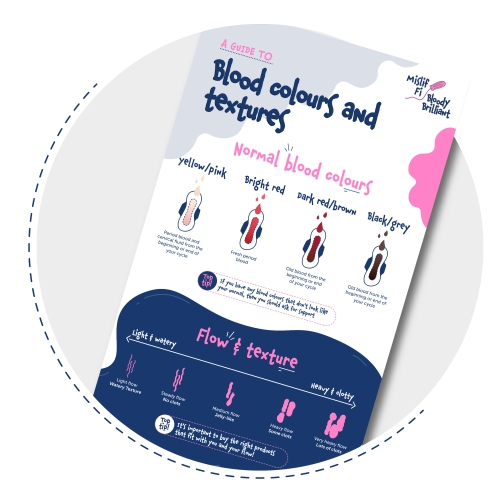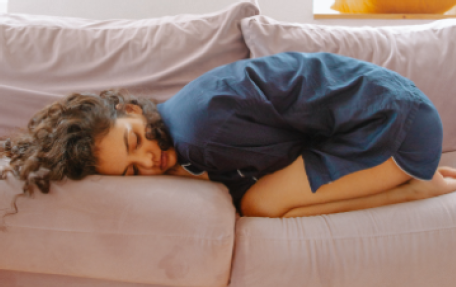Welcome to Period 101, your one-stop guide for everything period-related! Whether you want to know what to expect from your first period, or you’re well into the swing of things but still have some questions, don’t worry… we’re here to help!
In this blog we’ll cover all kinds of things! From what you period actually is (the sciencey bit), to how your period can affect your body, mood and feelings, and of course the question on everyone’s lips…. WHAT IS NORMAL?!
What is a period?
Your period or menstruation (that’s the ‘sciencey’ name) is part of your menstrual cycle. This cycle is ultimately your body’s way of preparing itself for a possible pregnancy.
During your menstrual cycle, there is an increase and decrease in a number of different hormones such as oestrogen and progesterone which control different aspects of this cycle, you’ll be hearing a lot about these hormones, so sit tight.
During your cycle your body releases an egg from your ovaries – we’re talking teeny tiny eggs here - you can’t see them with the naked eye, they’re that small! In order for the egg to be released it has to be matured, which is a job for our hormones.
These hormones are also responsible for making the lining of your uterus thick. Should one day an egg get fertilised by sperm, it would land on the thick cosy lining and that’s where a pregnancy would start. However, if the egg doesn’t get fertilised your body no longer needs the lining, so (here comes the hormones again!) your hormones instruct your body to break the lining down and remove it from the uterus via your vagina…and…Hey presto - your Bloody Brilliant period has arrived!
Now we know what’s actually going on down there, let’s talk specifics.
How long does the menstrual cycle and a period last?
Your menstrual cycle takes around 28 days to complete, but this is a good time to point out that EVERYONE is different! Just like your fingerprints are unique, so is your bloody brilliant body and how you experience periods. So, while we say 28 days it might be a little longer, it might be a little shorter, there really aren’t any set rules here. Of those 28 days, you could expect to bleed for anywhere between 3-8 days. Again, everyone is different, and your periods are likely to change. Your body can take some time to get into its own flow, so cut it a bit of slack - it’s learning what to do while you’re getting used to things too!
What are the signs that my period is coming?
If you’ve never had a period before, there are some signs which might indicate your period is coming and they’re all natural parts of growing up. If you’ve noticed your boobs are beginning to develop, and you’ve started to grow pubic hair, then you could expect to get your period about two years later. A more immediate sign for some people is if you notice discharge in your pants. Discharge is a white or yellowish fluid which usually shows up a few months before your first period.
There are lots of other signs your period is coming and these can be both physical and emotional. We call these signs PMS (premenstrual syndrome). Not everyone gets PMS and we all experience it differently. It usually happens just before and during your period, and it’s basically the reason you might find yourself wanting to eat your body weight in chocolate or burst into tears at the smallest of things…lost sock, bad hair day, burnt toast…trust me, we all have those days!
PMS brings with it all kinds of symptoms such as headaches, bloating, cramps, mood swings, feeling tired and having trouble concentrating. We’ve got a great blog all about PMS with top tips on how to help with these symptoms and many more, so go and take a look. It will finally explain some of those weird and wonderful feelings that you never knew were thanks to your bloody brilliant period!
Let’s get to the bloody truth. How much blood do we lose?
As we’ve already said, everyone is different, and what one person considers to be a light period (not much blood) might be heavy for someone else, so it’s really a case of getting to know your body in the early days. On average, women, girls and people who have periods lose between 3-9 teaspoons of fluid a month (it really isn’t that much when you put it that way!). But why did we just call it fluid? Well, while we commonly call it blood - and yes there is blood in there - there’s also other really impressive stuff in there too. About half of your period is blood, but the rest is made up of other things including tissue, nutrients and cervical mucus - pretty amazing when you think about it! It’s important that you monitor your flow - yes, go with it - but if you struggle it might be a sign that you need some help. A good indicator that your flow is very heavy, is if you have to change your period product every hour or two. If you find this is the case, you should speak to your doctor or nurse who will be able to help. On the other hand, some women, girls and people who have periods have a light flow (they don’t lose much fluid) and that’s totally normal too! Just be aware of your body and make sure you’re changing your period products often enough, for some products especially tampons it’s super important that you don’t leave them in too long. To find out more info on period products click here.
Why does the colour vary so much?
Like we just said, there’s lots of other things going on in there besides blood, that’s why it doesn’t always come out bright red like you might expect. But it’s not just what your period is made up of that determines the colour. The colour of your period can be a great tool for knowing what’s going on in your body. It can highlight signs of a poor diet, possible infections or other health conditions. In most cases a variety of shades is totally normal, with oxygen and hormones (there they are again) also playing a role in the shade of your flow (which is COMPLETELY NATURAL!) We’ve got a handy diagram and more information on the different colours of your period here.
Pain and WHAT IS NORMAL?!
A not-so-fun part about getting your period is period pains, or menstrual cramps, as they’re also called. It’s worth pointing out that not everyone gets period cramps. Most women, girls and people who have periods do, but if you don’t, then that’s absolutely nothing to worry about – just embrace the fact you can enjoy your bloody brilliant period cramp free!
So, what is period pain? Period pain is mainly caused by your uterus contracting (tensing up like the other muscles in your body) to help get rid of the lining which we spoke about earlier. You can get pains in your stomach, but it can also spread into your back and thighs. We’ve got a whole heap more information on period pain and what you can do to help here.
Hopefully by now you’ll be getting the idea that there’s all kinds of normal when it comes to your period: your normal, your mates’ normal, your next-door neighbours’ normal! What we’re trying to say is we’re all unique, but periods themselves are a normal part of life. After all, half the population will have periods at some point in their lives, so we should all be able to support each other. It’s important to have conversations about periods, as it’s something so many of us have in common!
Getting to know your body, your feelings, your health and your flow is really important. If you notice changes in your normal, or if you find it difficult to cope with any aspect of your period, ask for support. There’s no shame in asking for advice, like our team of Bloody Brilliant experts - your local doctor or nurse has all the skills and experience needed to help you. Only you know how you feel, so it’s important you get help if you need it!




